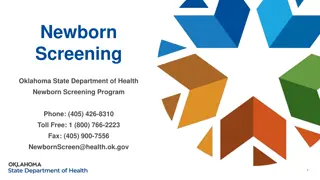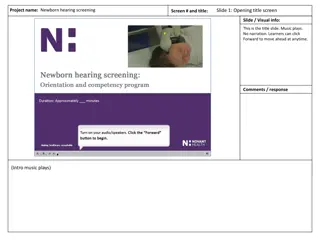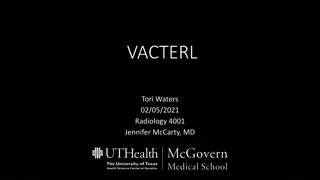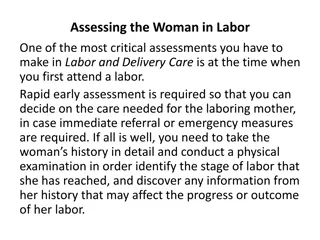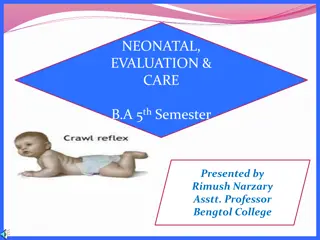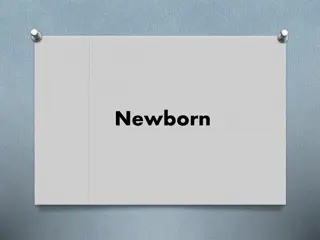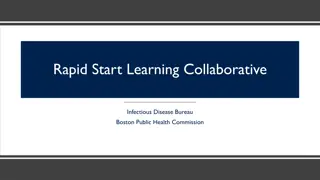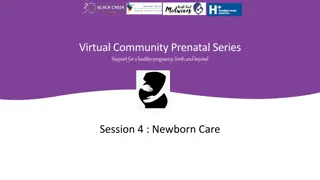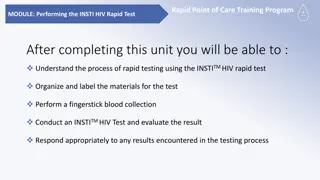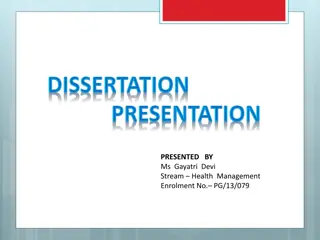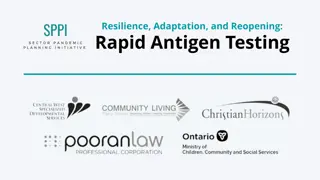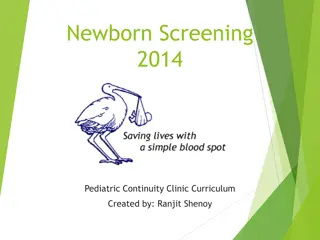Rapid Assessment of Newborn Care: Essential Steps and Interventions
Detailed information on the initial steps of newborn care, including assessing the need for additional interventions, managing conditions like persistent cyanosis and labored breathing, using a Pulse Oximeter, providing supplemental oxygen, and when to consider Positive Pressure Ventilation. Practical guidance for healthcare professionals dealing with newborns in various scenarios is provided with supporting images for visual reference.
Download Presentation

Please find below an Image/Link to download the presentation.
The content on the website is provided AS IS for your information and personal use only. It may not be sold, licensed, or shared on other websites without obtaining consent from the author.If you encounter any issues during the download, it is possible that the publisher has removed the file from their server.
You are allowed to download the files provided on this website for personal or commercial use, subject to the condition that they are used lawfully. All files are the property of their respective owners.
The content on the website is provided AS IS for your information and personal use only. It may not be sold, licensed, or shared on other websites without obtaining consent from the author.
E N D
Presentation Transcript
Rapid Assessment of the NB Initial Steps of NB Care How to determine if additional steps required What to do if baby has: Persistent cyanosis/labored breathing How to use a Pulse Oximeter How to give supplemental O2 When to consider PPV What to do when meconium stained amniotic fluid present
Healthy woman at 39wks uncomplicated single pregnancy Membranes rupture, amniotic fluid clear RN assigned to baby checks equipment and supplies. Baby born, FT, good muscle tone, crying Positioned on mother skin to skin, covered with worm blanket and dried RN stimulates her. Cord clamped at 1 min. Color pink Successful transition to NB circulation
Multiparous woman at 39wks, active labor and ruptured membranes. After admission mother develops fever, and given antibiotics Fetal HR monitoring: Category II NN resuscitation team called Introduce team 4 pre birth questions for risk factors Re resuscitation team briefing Equipment check
Baby born Poor tone, no cry. OB holds in warm blanket, suctions mouth and nose, stimulates, no change in status, cord cut Brought to radiant warmer Position/open airway, stimulate. Tone and respiratory effort improves. HR 120bpm and good BS 5 min Central cyanosis and Pulse Ox on right hand < minute specific value, so given supplemental O2 10 min Breathing regularly, Pulse Ox in normal range, O2 stopped Placed skin to skin on mother and monitored Team conducts short debriefing: preparation, team work, communication
Evidence supports clamping at 30-60 sec for most vigorous term and preterm NB If placental circulation not intact, cord should be clamped immediately
1- Term? 2- Good muscle tone? 3- Is baby breathing or crying?
Provide warmth Position head and neck Clear secretions, if needed Dry Stimulate
Respirations If not breathing, or is gasping, proceed to Positive Pressure Ventilation Heart rate 100 bpm Stethoscope Count number beats in 6 sec, multiply by 10 Connect pulse oximeter to right hand, ECG monitor If HR < 100 Start Positive Pressure Ventilation (PPV)
Cyanosis Poorly oxygenated blood Acrocyanosis Central cyanosis Pulse oximetry Measures Hbg saturated with Oxygen Takes 10 min for newborn to reach normal levels
When resuscitation Confirm central cyanosis When giving supplemental O2 When giving PPV Pre ductal: right wrist/hand Artery to right arm attaches to aorta before the ductus arteriosus Values change after birth
Oximeter reading is < target range for babys age in minutes If baby spontaneously breathing Free flowing oxygen O2 tubing O2 mask Flow inflating bag and mask T-piece resuscitator and mask Open reservoir on self inflating bag If baby not breathing or gasping PPV
Goal Maintain baby s minute specific O2 saturation Prevent hypoxia and hyperoxia Adjust delivered O2 using Compressed air and O2 Oxygen blender (21-30%) Flowmeter (adjust to 10L/min)
CPAP: continuous positive airway pressure Continuous low gas pressure to keep a spontaneously breathing baby s lungs open Baby must be breathing and have HR > 100bpm Flow inflating bag T-piece resuscitator with mask Both tightly fitted to baby s face
Vigorous Newborn Good respiratory effort and muscle tone Stay with mother, initial steps Gently bulb suction mouth and nose Non-vigorous Newborn Bring to radiant warmer for initial steps Bulb suction mouth and nose If baby not breathing, or HR < 100bpm after initial steps, proceed to PPV
You are called to attend a vaginal birth. The mother is in active labor with ruptured membranes. How would you prepare for this baby?


